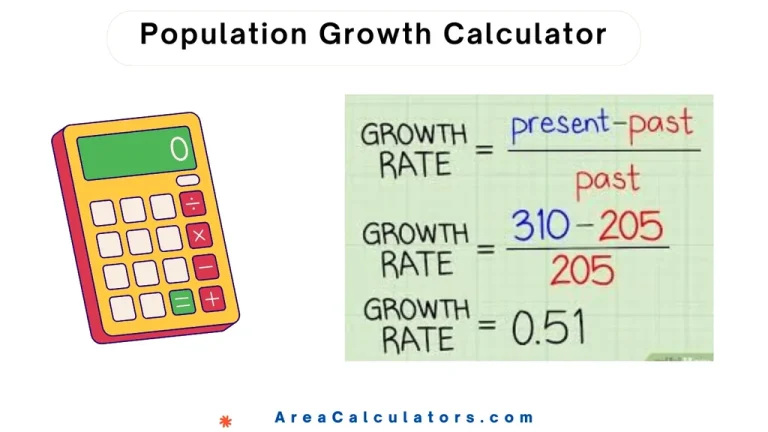Plants Per Hectare Calculator
To calculate the number of plants per hectare, divide 10,000 by the product of spacing between plants (SBP) and spacing between rows (SBR). This ensures accurate estimation of plant density for optimal growth and yield.
To calculate the number of plants per hectare, divide 10,000 by the product of spacing between plants (SBP) and spacing between rows (SBR). This ensures accurate estimation of plant density for optimal growth and yield.
The Plants Per Hectare Calculator is an invaluable tool for farmers, horticulturists, and agricultural planners. It simplifies determining plant density, helping optimize crop yields and resource usage.
By accurately calculating the number of plants per hectare, users can ensure proper spacing, minimize overcrowding, and enhance soil and light utilization. Whether planning tree plantations, vegetable gardens, or row crops, this calculator is essential for precision farming.
PD = 10,000 / (SBP ∗ SBR)
| Variable | Description | Unit |
|---|---|---|
| PD | Plant Density (plants/ha) | Plants |
| SBP | Spacing Between Plants | Meters |
| SBR | Spacing Between Rows | Meters |
Example 1: Calculate the number of plants per hectare for a crop with 0.5 m spacing between plants and 1 m spacing between rows.
| Step | Calculation | Result |
|---|---|---|
| Multiply SBP and SBR | 0.5 ∗ 1 | 0.5 |
| Divide 10,000 by the product | 10,000 / 0.5 | 20,000 plants/ha |
Example 2: Determine plant density for trees with 2 m spacing between plants and 3 m spacing between rows.
| Step | Calculation | Result |
|---|---|---|
| Multiply SBP and SBR | 2 ∗ 3 | 6 |
| Divide 10,000 by the product | 10,000 / 6 | 1,666.67 plants/ha |
The Plants Per Hectare Calculator is a practical tool designed to estimate the total number of plants that can be cultivated on one hectare of land based on planting density, spacing, and row configuration.
Whether used by farmers, foresters, or landscape planners, this calculator streamlines planting population estimations for efficient land use.
To use the calculator, simply input parameters like plant spacing, row spacing, and the total area. The tool applies formulas such as the plant population calculation formula, converting plant counts from acres to hectares when needed.
For example, it can calculate how many corn plants, trees, or other crops fit into a specific area based on standard or customized spacing guidelines.
Final Words:
In conclusion, the Plants Per Hectare Calculator optimizes planting density and land usage with accuracy and ease. It supports crop planning, forestry projects, and landscape design, ensuring sustainable and efficient growth outcomes.
Multiply your weight, the time spent in the steam room, and the constant 1.5 to estimate calories burned. The Steam Room Calories Calculator helps you estimate the number of calories burned while relaxing in a steam room. Steam rooms are known to promote sweating, which can aid in temporary weight loss and calorie burning. While…

To calculate the 10th power of a number, multiply the base number by itself ten times or raise it to the exponent of 10. The 10th Power Calculator allows you to find the result of raising a number to the power of 10 effortlessly. This tool is ideal for simplifying mathematical problems involving large numbers,…

To find the Square Root Curve, multiply the square root of the grade by 10. This approach smooths values using a square root transformation, commonly used in grading and scaling contexts. The Square Root Curve Calculator makes it easy to adjust scores or values by transforming them with a square root curve. This method, often…

To calculate population growth, multiply the initial population by (1+r) (1+r) raised to the power of time, where rr is the growth rate and t is the time period. This formula is essential for predicting future population sizes based on current data and growth rates. The Population Growth Calculator is a tool that is solely…

First, multiply the number of attendees by the meeting duration and their hourly rate. Add any additional expenses such as travel or materials to get the total meeting cost. A Cost of Meeting Calculator helps determine the total cost of a meeting based on the number of attendees, meeting duration, hourly rates, and additional expenses….

To calculate the area of a pentagon, square the length of one side (s²), multiply it by the constant √[5 × (5 + 2 × √5)], then divide by 4. This will give you the total area of the pentagon. Pentagon Area Calculator Length of Side: Calculate Formula: (A = frac{1}{4} times sqrt{5 times (5…